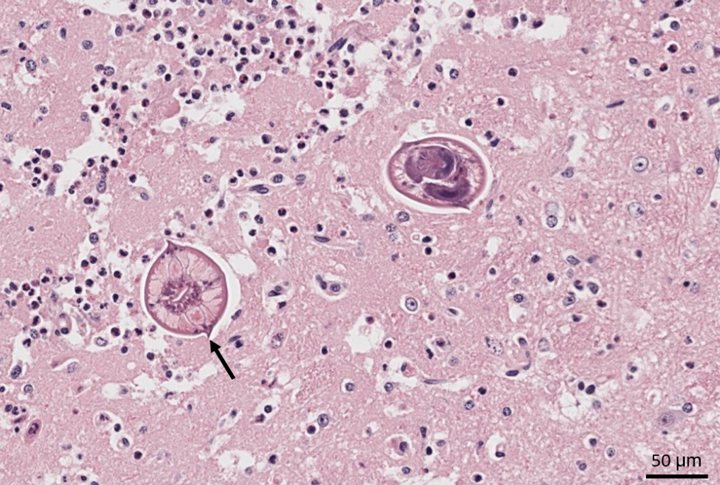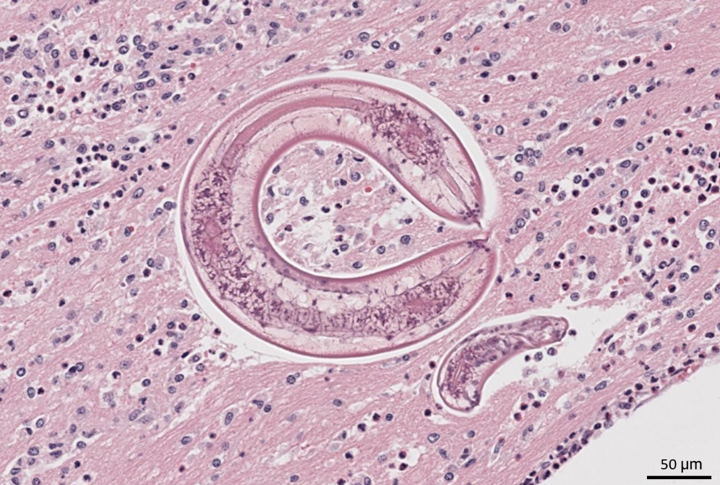Worms on the BrainAn adult female woodchuck presented to a wildlife clinic in New York state after being found on the side of the road. The woodchuck had multifocal crusts and pustules over most of the body, with skin sloughing, with mites and fleas noted on external examination. The animal displayed neurologic signs, with, minimal response to handling, and paddling reported. A dewormer and antibiotics were administered, but despite treatment, the woodchuck continued to decline, with no interest in food by the third day. Euthanasia was elected, and the animal was submitted for necropsy following a negative rabies test. Histologic examination of the brain revealed the following: Case contribution: Timothy Wu, MS, DVM, Dipl. ACVP Image 1 and 2: Histologic findings in the brain Ascarid larva migrans (likely Baylisascaris sp.) Histologic evaluation reveals numerous up to 60 um diameter nematodes, determined to be the larval stage, given the absence of genital tracts within the examined sections. The presence of lateral alae (arrow), coelomyarian-polymyarian musculature, and a uninucleate intestine are consistent with ascarid larvae. While other ascarids, such as Toxocara canis cannot be ruled out, the most likely diagnosis in this case is considered to be Baylisascaris sp. There are many species of Baylisascaris affecting wildlife, including Baylisascaris columnaris in skunks, Baylisascaris transfuga in bears, and Baylisascaris laevis in woodchucks. The most commonly discussed species is Baylisascaris procyonis, which affects raccoons, and can cause visceral larva migrans in a wide range of hosts, including humans. Ascarid migration of the central nervous system, as in this case, can cause severe clinical signs. Although quick diagnosis and treatment with corticosteroids and albendazole can prove effective, this is not always plausible, as diagnosis can prove difficult. |
Archives
July 2024
Have feedback on the cases or a special case you would like to share? Please email us ([email protected]). We will appropriately credit all submittors for any cases and photos provided.
|


